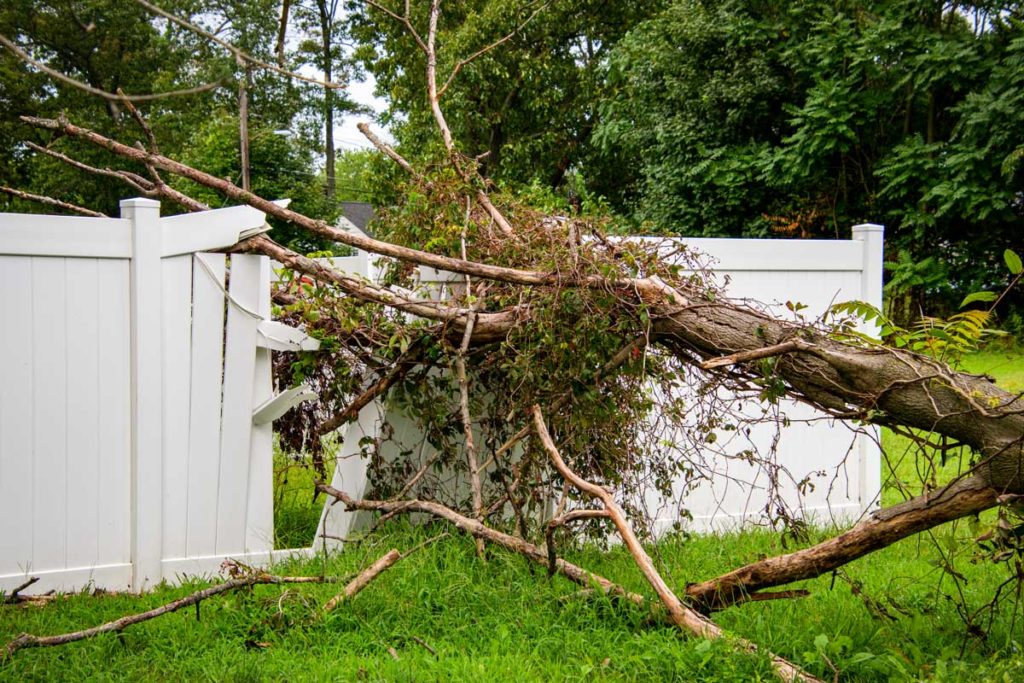5 Helpful Tips for Dealing with Storm Damage
Storm season–especially this summer’s–often comes with damage to trees, houses, and fences. Shear winds and downed tree limbs wreak havoc, causing many to need repairs or replacements for their fences. In the process of clean up, it is important to understand how best to deal with your fence’ storm damage. Otherwise, you just might cause extra work and expenses.
Dealing with Storm Damage
- Check your fence’s warranty. If you recently installed a fence before the storm, it may be covered by warranty. While a majority of fencing is not subject to local or national building codes, it should still hold up to storms with lower wind speeds.
- Do not cut off or trim down cracked or damaged wood posts. Vertical cracks may appear to be problematic but could just be part of the maturation process for the wood, having no impact on its structural integrity. Leaving these posts for a fence professional to assess is best as some posts may be reused to save you money.
- Do not trim down undamaged posts. Trimming down posts removes a point for contractors to use to pull it and the concrete footing. Without the post, moving that footing is labor-intensive and time-consuming, and increases the cost of your repair or fence replacement.
- Check your vinyl posts carefully for crimps and cracks. Even the best-made vinyl fence takes damage when high wind speeds are involved. It is not uncommon to see only the posts remaining after a severe storm. Be on the lookout for small cracks near the base of the post or slight crimps, as these are signs that they will not last another storm.
- Be patient. Massive, damaging storms hit many people at once, causing local fence contractors to be flooded with calls for repairs and replacements. The increase in demand often drives up the price as contractors have to factor in overtime wages and higher product margins. If you can, wait a few weeks or more to let your contractor catch up. Late fall and early spring are the best times to get an estimate as the contractors look for ways to keep their crew working.
Final Thoughts
Lastly, evaluate how much wind your fence sees during peak storms and how wind moves through your neighborhood. Instead of going with another privacy fence, you might want a more open design that allows for more wind flow. It is no coincidence that your fence was blown over. High winds will once again find your privacy fence in their line of sight, if you don’t plan accordingly.

